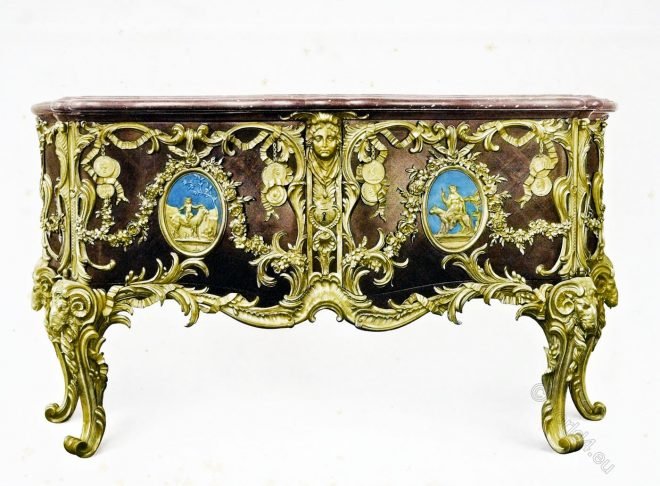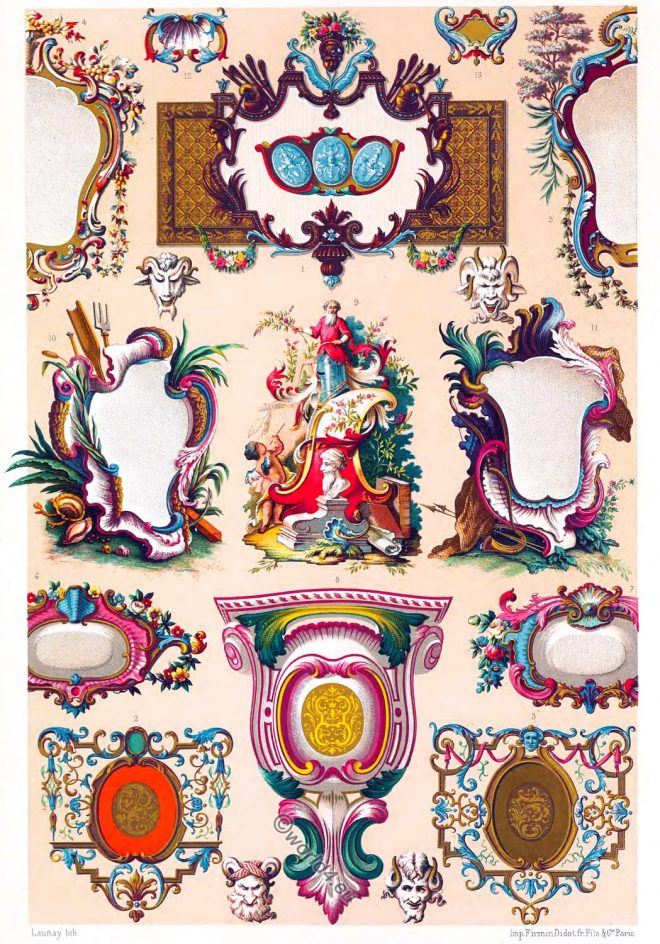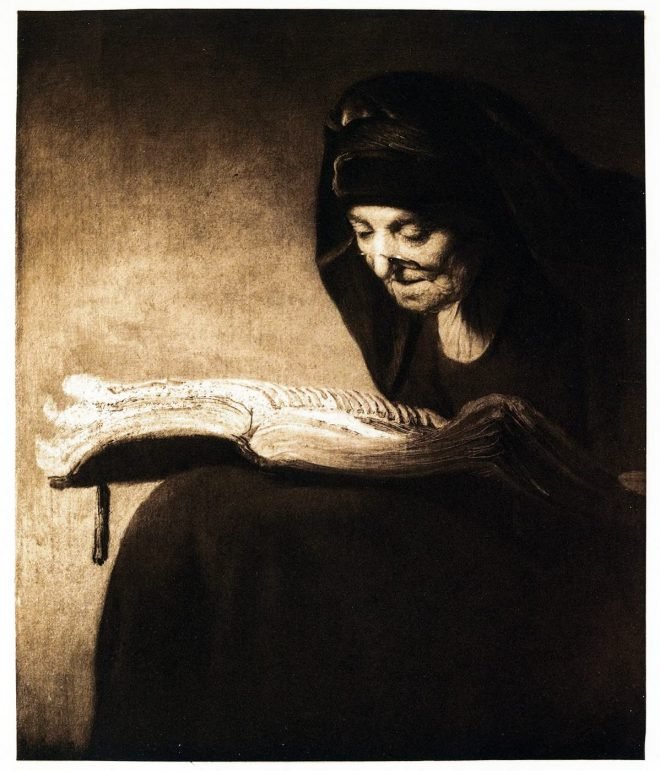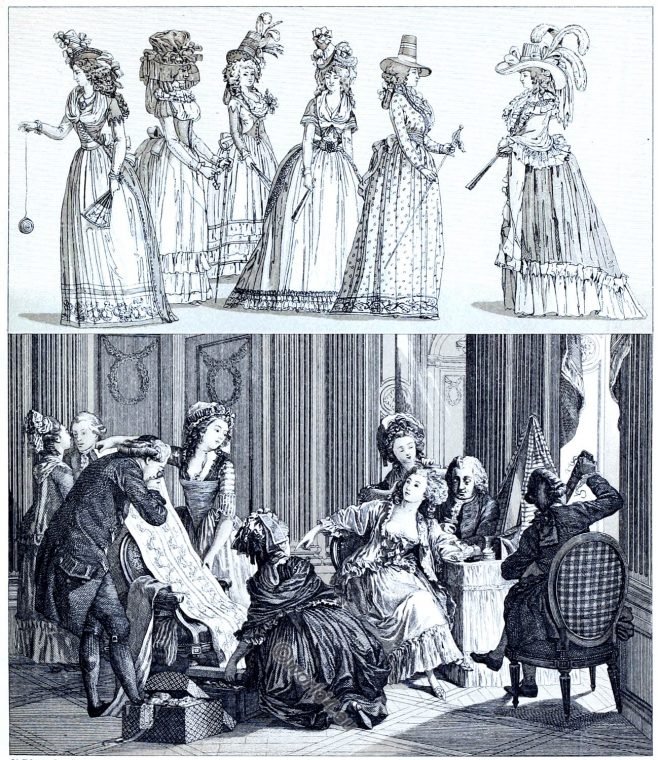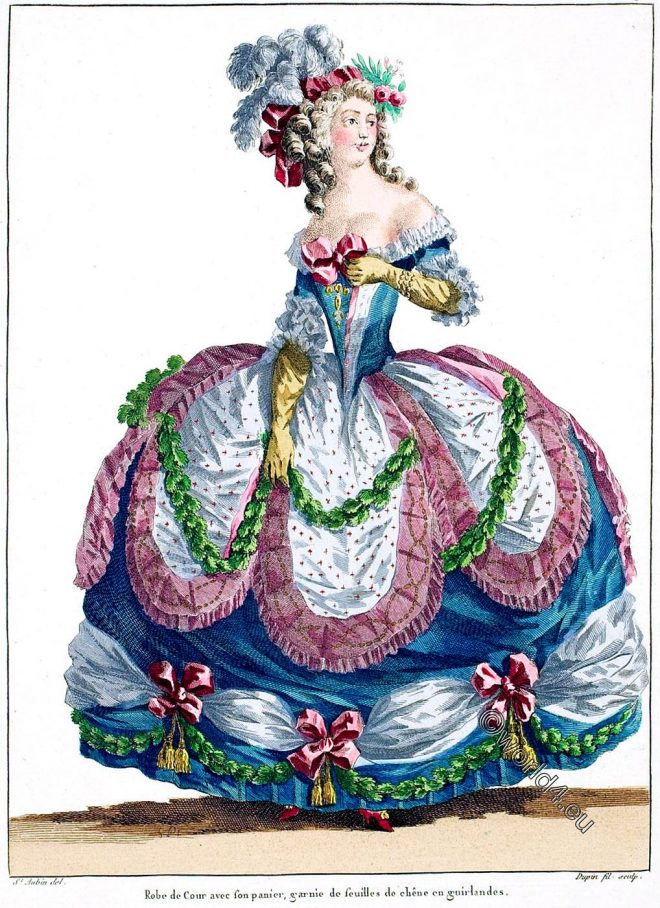The Médaillier is considered one of the most beautiful creations of French furniture from the early days of Louis XV’s reign.
Category: Baroque
Fourreau élégant. La bonne petite Soeur promenant son petit frère. 1786.
La bonne petite Soeur promenant son petit frère. Elle est Coiffée d’un Chapeau à la sicilienne et vêtue d’un Fourreau élégant.
Cartouches. Specimens. Peinture en camaïeu. France 18th century.
THIS plate terminates the series in which we have successively represented the different phases of the cartouche.
An old woman reading with spectacles by Rembrand. Portrait of his mother.
The Wilton picture is mentioned by Gambarini as: “Rembrandt — an old woman reading with spectacles.” It was therefore in the collection before 1730.
The Grand Lever. Second Toilette of a lady of state. France 18th century.
France 18th century. The Grand Lever. The morning toilet of a lady of status. The caracos, the shirts, the overskirt, etc. Female fashion during the reign of Louis XVI.
A transverse Spinet made by Stephen Keene at the end of 17th century.
Stephen Keene (about 1640-1719) was an English instrument maker. He made harpsichords, spinets and virginals in his workshop in London.
Robe de Cour avec son panier, garnie de feuilles de chêne en guirlandes.
Grandes robes d’étiquette à la cour de Marie-Antoinette. Robe de Cour avec son panier, garnie de feuilles de chêne en guirlandes. A Madame la Comtesse d’Oyras 1786.
Royal and Republican Navy uniforms. France 18th century.
The uniforms of the French Navy under the government of Louis XVI and the revolution. 18th century.
Clothing of the middle classes in France during the rococo period.
France 18th century. Costumes of the middle classes. Bourgeois women and their children. Rococo period.
Bagpipes. The Musette, Zampogna, Hurdy-gurdy and Cornemuse.
The Bagpipe (Cornemuse and Musette) and the hurdy- gurdy (Vielle) were, after the thirteenth century, banished to the lower orders, to the blind and to the wandering mendicant class.

